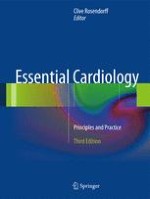Abstract
Nuclear cardiovascular imaging uses various radioisotopes labeled to suitable molecules to noninvasively image various biological phenomena in the intact human body under various physiological conditions. In cardiovascular medicine, we can study myocardial perfusion, function, and metabolism at rest and with exercise or pharmacological stress. Myocardial perfusion imaging is perhaps the most powerful and widely used noninvasive test for diagnosing, risk stratification, and evaluating the progress of patients with coronary artery disease. A number of advances have been made recently in the techniques and instrumentation used for myocardial perfusion imaging, to improve its diagnostic accuracy and patient comfort and reduce radiation exposure to the patients. Single-photon emission tomography (SPECT) is the conventional technique for nuclear imaging. However, positron emission tomography (PET) is increasingly being used. PET imaging offers better resolution and better image quality and less susceptibility to technical artifacts compared to SPECT imaging. A number of new molecular imaging techniques are currently under development. These techniques use novel radiopharmaceuticals and offer the possibility of noninvasive imaging of several complex biological phenomena such as myocardial ischemia; atheroma, vascular inflammation, and vascular remodeling; angiogenesis, stem cell and gene therapy, and gene expression; and myocardial injury, repair, and remodeling.
